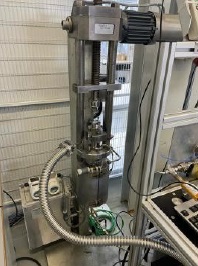 Valve Packing Testing with Hydrogen
Valve Packing Testing with Hydrogen
 Hydrogen’s potential to revolutionise our energy landscape is undeniable. Its clean nature, versatility, and ability to store renewable energy make it a compelling option for a sustainable future. From powering vehicles to storing renewable energy, hydrogen is making waves as a potential significant change in the energy landscape.
Hydrogen’s potential to revolutionise our energy landscape is undeniable. Its clean nature, versatility, and ability to store renewable energy make it a compelling option for a sustainable future. From powering vehicles to storing renewable energy, hydrogen is making waves as a potential significant change in the energy landscape.
Hydrogen and helium are both gases and can leak if not properly contained. However, there are some differences between the two in terms of their properties and behaviour when it comes to leakage.
Hydrogen is the lightest and most abundant element in the universe. It is highly flammable and can form explosive mixtures with air. Hydrogen gas is colourless, odourless, and tasteless, making it difficult to detect leaks without specialized equipment. Hydrogen molecules are small and can easily escape through tiny openings or leaks in containers or pipelines.
Helium, on the other hand, is an inert gas and is non-flammable. It is also colourless, odourless, and tasteless. Helium is lighter than air and can quickly disperse into the atmosphere if released. While helium is not as prone to explosion or combustion as hydrogen, it can still pose safety risks if it displaces oxygen in enclosed spaces. In terms of leakage detection, hydrogen leaks can be detected using various methods such as hydrogen sensors, gas detectors, or by using soapy water to check for bubbles at potential leak points. Helium leaks are measured using similar methods, but helium is often used as a tracer gas in leak testing due to its low concentration in the atmosphere. It is important to handle both hydrogen and helium with care and follow proper safety protocols to prevent leaks and ensure the safety of personnel and equipment.
Packings testing for hydrogen involves evaluating the performance and integrity of these seals used in hydrogen systems. Since hydrogen is a highly flammable and reactive gas, it is crucial to ensure that packings can effectively contain and prevent leaks of hydrogen gas. At the University DHBW Mannheim a packing test stand has been set-up to allow testing of helium and hydrogen in the same test device. A test project has been established to test different packing materials. First tests with expanded graphite packings for fugitive emissions service showed similar leakage results compared to tests with helium. The test program is continuing with testing of PTFE packings.
